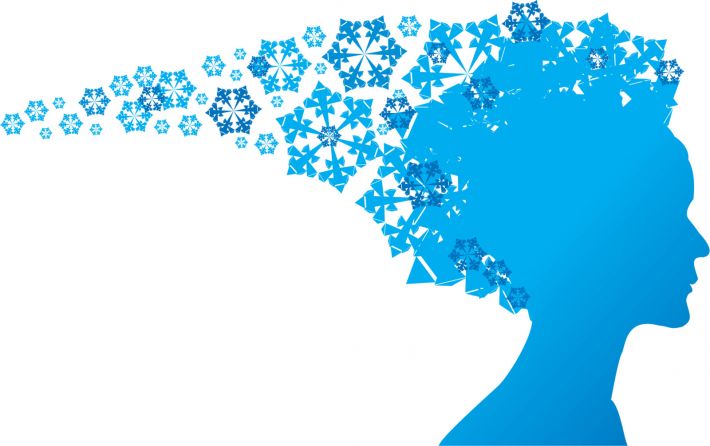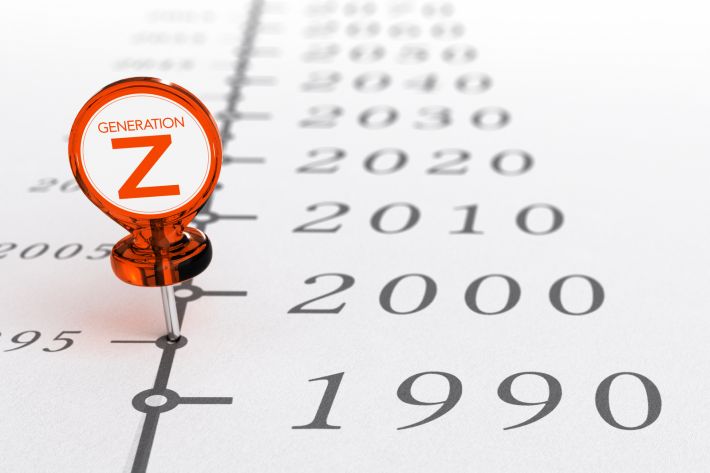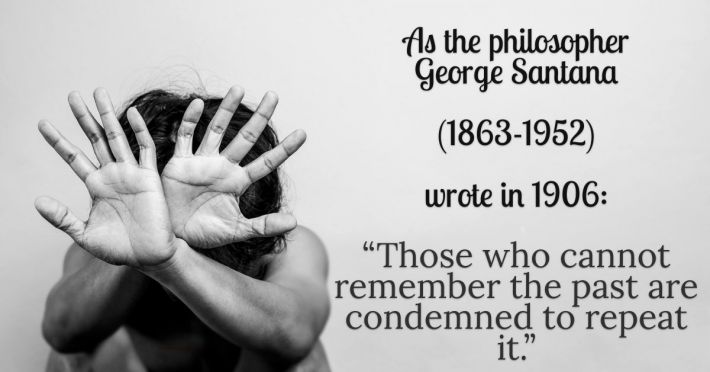- in Personality by Tony
The Snowflake Philosophy

Generation Snowflake has become the new norm. This article examines the nature of the Snowflake at the end of today’s cultural climate, and it also looks at the overly sensitive Snowflake characters of tomorrow. This article concludes by identifying some key characteristics of a Snowflake.
More...
The core metaphor is that such people are delicate like snowflakes, easily hurt by the complex realities of life, and think of themselves as unique without realising they are entitled and privileged— because every snowflake is different, as they say.
Whether you are from a Generation of Snowflakes or a Snowflake in real life, you are bound to relate to one or all of these personalities.
But, in the 1970s, Snowflake was a disparaging term for a white man or for a black man who was mocked if he was witnessed acting white.
It was also utilised as a slang term for cocaine. Before either of those, it was used for a time with a very particular political meaning.
In Missouri in the early 1860s, a snowflake was a person who was opposed to abolishing slavery — the implication of the name being that such people valued white people over black people.
What is the origin of the term snowflake?

Snowflake first became famous as an insult in the US after releasing the 1999 Brad Pitt Cult Film Fight Club. Chuck Palahniuk, who wrote the original book in 1996, claimed he invented the term, but it actually resonates more than two decades on.
One of the prominent lines, “You are not special. You are not a beautiful and unique snowflake,” clearly struck a chord, and the phrase took off.
Generation Snowflake
The term “Generation Snowflake” was a put-down used to describe the current generation of sensitive millennials, and was popularised by a discussion on Fox News of a 2015 Yale University confrontation over culturally insensitive Halloween costumes.
The issue revolved around how universities should intervene and whether students are offended; they should simply “look away”. This view is not without merit, but there are also many negative aspects of the epoch, including an apparent lack of intellectual curiosity and a tendency to be too critical of the past.
In March 2015, the National Union of Student Women’s Conference in Solihull (UK) tried to ban clapping if it triggered anxiety, instead suggesting the use of “jazz hands” instead of clapping due to clap-induced anxiety.
This term is often regarded as derogatory, as it is a label applied by conservatives to liberals. Young people usually identify as “snowflakes” when their sense of individuality characterises them.
Critics now label this generation as fickle, sensitive and overly politically correct. But is the term genuinely accurate?
Regardless of its definition, it is clear that this generation cannot accept criticism without resentment.
Political snowflake

The “snowflake generation” was a derogatory term popularised by the alt-right during the 2016 presidential election. It is often used to describe easily offended people or think they deserve special treatment.
During the election of Donald Trump, the alt-right especially adopted snowflake to insult the political left, who were upset by the events and concerned about rising nationalism and bigotry.
Liberals, though, have thrown snowflake right back at them, with comedians like Neal Brennan and political commentator Van Jones calling Donald Trump a snowflake for his thin skin.
The word has negative connotations, but it has also helped highlight the resilience of millennials. Many of them are bucking the tradition of older generations by consuming fewer drugs and alcohol.
When is the phrase snowflake generally used?

The experts say the term snowflake is now used as an insult to describe someone who is "overly sensitive or as feeling entitled to special treatment or consideration". The millennial generation emerged in the early 2000s, and the label snowflake has become synonymous with sensitivity. However, one recent occurrence highlights the negative connotation of the term.
The British Army published an advert for a new recruitment campaign. The soldier featured in the ad received hundreds of social media messages mocking him for being associated with a snowflake poster.
The advertisement was intended to reverse the term’s connotations, highlighting the value of compassion in millennials.
Overly Sensitive Person

The Overly Sensitive Person (HSP) is a rare kind of individual who cannot conform to other people’s expectations. This natural trait occurs in about 20 per cent of the population.
It does not make them less resilient, and it is not a sign of weakness. But living in a world where emojis are used instead of actual words and no face-to-face communication is available, making it more challenging to process the feelings of others.
Consequently, people are often mistaken to be weak and over-sensitive. In reality, these people are not vulnerable; they are simply overly sensitive and are prone to anxiety.
Snowflake or an Overly Sensitive Person
To connect and not offend anyone in the workplace, try the following methods to spot a highly sensitive person and understand them.
One such way is by following the DOES acronym by fitting the following signs into your technique.
For example, D is for depth of processing: an HSP will unduly analyse everything, it’s innate, from the way you accidentally dismissed them at a meeting – or forgot to ring.
O is for easily overstimulated. A person with HSP, who is often called shy, will feel overwhelmed by too much stress, noise, and people – and will find it hard to tolerate stimulants like coffee.
E is for emotionally reactive. Overly Sensitive People are empaths and pick up on your mood. Research shows they also have an increased emotional connection to art and music.
S is for subtle stimuli, and they are more instinctive and can understand the slightest nuances in a book – or a glance.
Overall, they are overly affected by external influences that would not affect others, such as constructive criticism. Those who are excessively sensitive may feel things more deeply, are more emotionally reactive, take a longer time to make decisions, get more upset about those decisions that they or others make that don’t turn out well, and cry more.
Generation Snowflake

Generation snowflake was one of Collins Dictionary’s 2016 words of the year, but with it came the phrases “check your privilege”, “safe spaces” and “trigger warnings”. Thereby, Generation Snowflake describes: The generation of people who became adults in the 2010s, viewed as less resilient and took more offence than previous generations.
Generation Snowflake is a put-down used to express the current generation of sensitive millennials. Aged in their late teens and early twenties, this generation mostly embraced their snowflakey ways while at university.
Universities, such as Oxford, were forced to put trigger warnings on sexually violent legal case studies.
Cambridge University Student Union’s recent vote to ban military personnel from its freshers’ fair because their presence may be “alarming” to students and could “detrimentally affect” their mental health.
Nevertheless, America’s Miriam-Webster dictionary reckons snowflake has been used as an insult for nearly 150 years, but with a different meaning.
Still, the term snowflake had become a common insult since the Civil War, when it was used to describe opponents of slavery. It is thought that Chuck Palahniuk had popularised the modern snowflake insult through his 1996 book, which was made into a cult film in 1999.
These days, the term is used to insult overly sensitive and emotionally fragile people, and conservatives use it to disparage liberals. And, of course, it is not uncommon to hear people dismiss others with the snowflake label.
Snowflake characters today
Today, many of these universities are hostile to free speech and determined to shield students from any ideas they don’t like.
The student union stated that they are contractually required to put up Safe Space posters and note down any instances of offensive behaviour flagged up by audience members.
Think again if you’re wondering if we can start reading comic books with Snowflake characters. Marvel has just announced the first non-binary superhero in the ‘New Warriors’ series.
The character is the twin of Safe space and wears terms as badges of honour. She also generates crystallised snowflake-shaped shurikens. And like her twin, Snowflake’s power is unique: she turns a fragile word into a razor-sharp weapon.
While the comics have incorporated a few LGBTQ themed characters, the name is still controversial and considered derogatory to some people.
For example, Snowflake is one of the few non-binary Marvel characters who have the power to create blizzards and shuriken-like snowflakes.
And while her name is still demeaning to some, it’s no longer a problem. She was exposed to a gas that resembles the internet, and she has access to real-time maps and other services.
Politically correct snowflakes

Both expressions with fascinating histories have collided in recent years. In a sense, the terms’ political correctness and the adjectivally: being politically correct, had entered the language via the US feminist and other left-wing movements of the 1970s.
In fact, the term “politically correct” only came into mainstream usage in the 1990s when attitudes really began to change in the 1990s. It is no means a coincidence that the myth of “political correctness” emerged simultaneously.
The generation that grew up in those years – the “Millennials”- has proved more tolerant, open-minded, and watchful for discrimination. It seems political correctness is now a term used interchangeably with a more accepting in a politically correct society.
Younger generations, who are more accepting of social issues and, in turn, are more watchful of discrimination, are mocked by their elders and, in favour, referred to as snowflakes.
Of course, there have been downsides to these shifts in perspective. Does society think political correctness has gone mad, or do we want people to be offended by our views?
Black Lives Matter

The campaign to tear down monuments in towns and cities across Britain gathered pace today as a ‘hit list’ of statues and memorials deemed to be "celebrating racism and slavery". Merely destroying their statues serves no purpose because their language and literature provide the evidence for their actions, thoughts and beliefs.
Students have removed a poem by one of England’s greatest writers, Rudyard Kipling, from a University of Manchester building because they claim the author was “racist”.
Student leaders at the University of Manchester claimed the respected author of The Jungle Book “stands for the opposite of liberation, empowerment and human rights”.
The artist painted the poem on the wall of the students’ union. But it was removed by students on Tuesday to “reclaim the history” of those who were “oppressed by the likes of Kipling”.
Ironically, the Oxford University chancellor Chris Patten accuses Cecil Rhodes statue protesters of ‘hypocrisy’ because imperialists’ trust funds scholarships for 20 African students a year.
British prime minister Boris Johnson’s Business and Industry Minister Nadhim Zahawi, who was born in Iraq and moved to the UK with his Kurdish parents aged nine, has since said there should be no statues of slave traders in Britain.

Unfortunately, slavery still continues in the UK; Human trafficking is a human rights violation and a crime today.
The Root Cause of Human Trafficking is Traffickers (Slave Traders)
People might argue that poverty, lack of education, immigration policy, environmental conditions, fractured families, and a lack of good job opportunities are the true causes of human trafficking.
There is no doubt that these conditions create a toxic cocktail of vulnerability that makes it easier for traffickers to exploit their victims.
Future generations have been blessed with tolerance, open-mindedness, and watchful for discrimination, but hypocrisy allows this to happen underneath their own nose today. Instead, individuals are more concerned about events that transpired 200 years ago.
conclusion
Over the past decade, a new term has been used to demonise young people who care passionately about fighting racism, sexism, homophobia, transphobia and economic inequality.
The term is “snowflakes” but those young people, unlike older generations, are portrayed as coddled and easily offended. Should caring about injustice be something worthy of praise rather than ridicule; from a generation that is far more aware of the widespread ramifications of racism and sexism.
Overall, will this make us nicer or just a little kinder?






